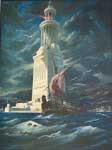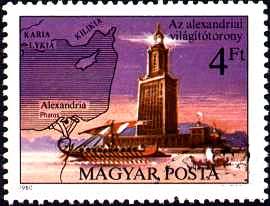.
N - O - P - Q - R - S - T - U - V - W - X - Y - Z
Lamps

Joseph-Benoit Suvee, Invention of the Art of Drawing, 1791, 2.67 m x 1.32 m, Groeninge Museum, Bruges
According to a legend the first figurine in clay was produced by Boutades, a Sikyonian potter at Corinth thought to have lived before 657 BC. Boutades produced the figurine on behalf of his daughter, "who was in love with a young man; and she, when he was going abroad, drew in outline on the wall the shadow of his face thrown by a lamp. Her father, having pressed clay onto this, made a relief that he hardened by exposing it to fire along with the rest of his pottery" Pliny.
The Callimachus (gr. Kallimachos) Lamp in the Erechtheion
A golden lamp for the goddess was made by Callimachus. Having filled the lamp with oil, they wait until the same day next year, and the oil is sufficient for the lamp during the interval, although it is alight both day and night. The wick in it is of Carpasian flax, the only kind of flax which is fire-proof, and a bronze palm above the lamp reaches to the roof and draws off the smoke. The Callimachus who made the lamp, although not of the first rank of artists, was yet of unparalleled cleverness, so that he was the first to drill holes through stones, and gave himself the title of Refiner of Art, or perhaps others gave the title and he adopted it as his. Pausanias Description of Greece, Book I, Attica
Kallimachos (or Callimachus) his nickname was according to Vitruvius katatexitechnos (he who pines away because of art), invented a golden lamp for the Erechtheion in Athens. Image of the Erechtheion interior with the position of the Kallimachos lamp see the drawing (JPG) from A Diachronic Examination of the Erechtheion and Its Reception (Ph.D. thesis of Dr. Alexandra Lesk , http://www.erechtheion.org/ )
Industrial production of Terra cotta lamps
Around 700 BC Greeks began making terra cotta lamps replacing torches. The word lamp is derived from the Greek word lampas, meaning torch. In 300 BC Greeks invented a method that automatizes the production of these lamps.
The Parthenon An Essay On The Mode By Which Light Was Introduced Into Greek And Roman Temples
Levers
Levers are one of the basic tools; they were probably used in prehistoric times. Levers were first described about 260 BC by Archimedes. Many of our basic tools use levers, including scissors (two class-1 levers), pliers (two class-1 levers), hammer claws (one class-1 lever), nutcrackers (two class-2 levers), and tongs (two class-3 levers). The lever consists of three elements: the place where force is applied, the load to be moved, and the pivot point or fulcrum. These can be arranged in various orders. The familiar situation of pushing down on a beam to lift a load has the elements in the order force- fulcrum-load. A wheelbarrow is a lever with its elements in the order force-load-fulcrum (the wheel is the fulcrum). The lever was still amazing enough that in the third century B.C. Archimedes could awe listeners by saying "give me a place to stand and a lever long enough, and I will move the Earth".

Pharos of Alexandria, Martin Heemskerck


The Pharos of Alexandria in the City founded by Alexander. The left Greek stamp shows a coin that shows probably the construction of the Pharos,
See also: The Pharos of Alexandria
A - B - C - D - E - F - G - H - I- J - K - L - M -
N - O - P - Q - R - S - T - U - V - W - X - Y - Z
| Ancient Greece
Science, Technology , Medicine , Warfare, , Biographies , Life , Cities/Places/Maps , Arts , Literature , Philosophy ,Olympics, Mythology , History , Images Medieval Greece / Byzantine Empire Science, Technology, Arts, , Warfare , Literature, Biographies, Icons, History Modern Greece Cities, Islands, Regions, Fauna/Flora ,Biographies , History , Warfare, Science/Technology, Literature, Music , Arts , Film/Actors , Sport , Fashion --- |

